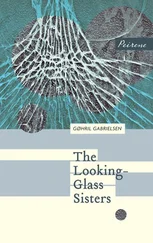“That’s how women are” is also said. Racism and sexism drink from the same wells and spit out similar words. According to Argentine criminologist Eugenio Raúl Zaffaroni, the founding text of all penal law is The Witches’ Hammer, a manual from the Inquisition directed against half of humanity and published in 1546. The inquisitors spend the entire book, first page to last, justifying the punishment of women by their biological inferiority. Women had long been mistreated in the Bible and in Greek mythology, from the days when foolish Eve made God throw us out of paradise and when that idiot Pandora opened the box and filled the world with misfortune. “The head of woman is that of man,” explained Saint Paul to the Corinthians, and nineteen centuries later Gustave Le Bon, one of the founders of social psychology, was able to prove that an intelligent woman is as rare as a two-headed gorilla. Charles Darwin acknowledged some feminine virtues, like intuition, but these were “virtues characteristic of inferior races.”
Since the earliest days of the Conquest of America, homosexuals have been accused of treason to masculinity. Then, the most unpardonable of affronts to the Lord, who was obviously male, was the femininity of those Indians who to be women needed only to have tits and to give birth, as Balboa is said to have put it. Today, treason against femininity is the accusation leveled at lesbians, those degenerates who don’t reproduce. Born to make children, undress drunks, and dress up saints, women have traditionally been accused of congenital stupidity, like Indians, like blacks. And like them they have been condemned to the shantytowns of history. Official history in the Americas concedes only a tiny role to those loyal shadows of male heroes, resigned mothers and suffering widows: the flag, embroidery, and mourning. Rarely is mention made of the European women who fought in the Conquest or the women born in the Americas who raised their swords in the wars of independence, although macho historians should at least applaud their virtues as warriors. Even less does one hear of the Indian and black women who led several of the many rebellions in the colonial period. Invisible, they appear only miraculously, when you dig deep enough. Not long ago, reading a book about Surinam, I learned of Kaála, leader of free people, who roused fugitive slaves with her sacred staff and abandoned her husband because he was feeble at love.
Points of View/5
Had the Saints who wrote the Gospels been women, how would they have portrayed the first night of the Christian era?
Saint Joseph, the Holy women would have written, was in a foul mood, the only one with a long face in that stable where the baby Jesus shone in his manger. Everybody else was smiling: the Virgin Mary, the little angels, the shepherds, the sheep, the oxen, the donkey, the kings who had come from the East, and the star that had led them to Bethlehem. Everybody smiled except for sullen Saint Joseph, who grumbled, “I wanted a girl.”
Points of View/6
If Eve had written Genesis, what would she have said about the first night of human love?
Eve would have begun by making it clear that she was not born from anyone’s rib, nor did she know any serpents, nor did she offer anyone apples, and God never told her that giving birth would hurt or that your husband would tell you what to do. All those stories were just lies Adam told the press.
Like Indians and blacks, women, though inferior, are a threat. “Better a man’s spite than a woman’s kindness,” warns Ecclesiasticus. And Odysseus knew enough to avoid the songs of mermaids meant to entice men from their course. There is no cultural tradition that does not justify the masculine monopoly on weapons and words, nor is there a popular tradition that fails to perpetuate disdain for women or to denounce them as a danger. Proverbs transmitted from generation to generation teach that women and lies were born the same day and that a woman’s word isn’t worth a pin. The peasant mythology of Latin America is filled with ghosts of women seeking vengeance as fearsome spirits, “evil lights” that lie in wait for travelers at night. In vigil and in sleep, men betray their terror that females may invade the forbidden territories of pleasure and power, and thus it has been from time immemorial.

It’s not for nothing that witch-hunts went after women, and not only during the Inquisition. Spasms and moans, maybe orgasms — even worse, multiple orgasms — these were the evidence of a woman bewitched. Only possession by the Devil could explain so much forbidden fire, which by fire was punished: God commanded that female sinners burning with passion be burned alive. Envy and terror of female pleasure are nothing new. A myth common to many cultures over the ages and across the world is that of the vagina dentata, the woman’s sex like a mouth filled with teeth, the insatiable piranha that feeds on male flesh. And in the world today there are twenty million women whose clitorises have been mutilated.
No woman is free from suspicion. In boleros they’re all ungrateful; in tangos, they’re all whores (except for mama). In the countries of the South, one woman out of every three married women is routinely beaten for what she has done or could do. “We are asleep,” says a woman worker in Montevideo’s barrio Casavalle. “Some prince gives you a kiss and puts you to sleep. When you awake, the prince is beating you up.” Another: “I’ve got my mother’s fear, and my mother had my grandmother’s.” Men confirm their right of ownership over women with their fists, just as men and women do over children.
And rapes, aren’t they also rites to enforce that right? Rapists don’t seek pleasure, nor do they find it. Rape brands a mark of ownership on the victim’s buttocks, the most brutal expression of the phallic power of the arrow, the spade, the rifle, the cannon, the missile, or any other erection. In the United States a woman is raped every six minutes, in Mexico every nine minutes. A Mexican woman says: “There is no difference between being raped and being hit by a truck, except that after rape men ask if you liked it.”
Statistics track only those rapes that get reported, which in Latin America are always many fewer than occur. Most rape victims remain silent out of fear. Many girls, raped in their homes, end up on the streets, which they work as cheap bodies. Some of them, like all street kids, make their homes on the pavement. Fourteen-year-old Lélia, raised by the grace of God on the streets of Rio de Janeiro, says, “Everybody steals. I steal and people steal from me.” When Lélia sells her body, they pay her little or they pay her with blows. And when she steals, the police steal what she stole and her body as well. Angélica, thrown onto the streets of Mexico City at sixteen, says: “I told my mother that my brother had abused me, and she kicked me out of the house. Now I live with a guy and I’m pregnant. He says he’ll support me if I have a boy. If I have a girl, he doesn’t say.”
“In today’s world, being born female is a risk,” says the director of UNICEF. In 1995 in Beijing, the international women’s conference noted that women today earn one-third what men earn for equal work. Of every ten poor people, seven are women, and barely one woman in a hundred owns property. Minus a wing, humanity flies crooked. For every ten legislators, there is, on average, one woman, and in some parliaments there are none. Women are acknowledged as useful at home, in factories, or in offices and even as necessary in bed or in the kitchen, but public spaces are virtually monopolized by men born with the urge to have power and make war. That a woman, Carol Bellamy, heads UNICEF is unusual. The United Nations preaches equality but doesn’t practice it: at the highest levels of this, the highest international organization, men occupy eight out of every ten positions.
Читать дальше












